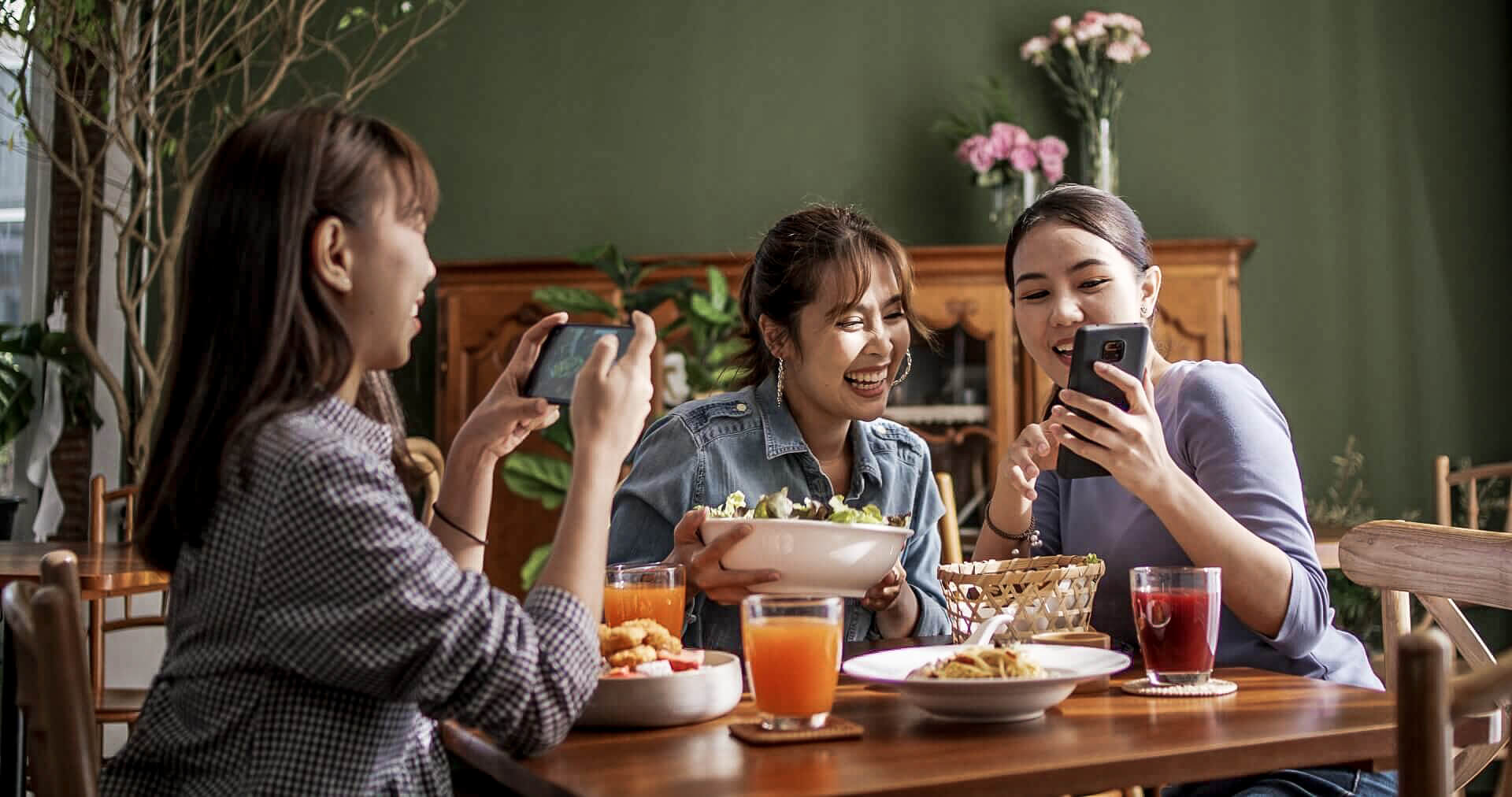Word-of-mouth publicity is nothing new. People love to shout about what they like and what they don’t, and reviews and recommendations have been driving new business for centuries. In recent years, email campaigns, virtual events and social media have taken the discussion online, making reviews more accessible and more important than ever. Now, potential customers can consult thousands of opinions at the click of a button. As word-of-mouth, both digital and face-to-face, continues to be a powerful tool for restaurants looking to grow their business, we explore five key strategies for driving positive conversations about your business.

Image: AdobeStock | hakinmhan
Know the power of reviews
“The power of word-of-mouth is incredibly important, and restaurants can’t underestimate that,” says Felicity Read, managing director of Leapfrog PR. Businesses should be aware that word-of-mouth works both ways: a positive review can be transformative, but a negative review can be devastating. As social media has multiplied the number of reviews that are out there, it has also raised opportunities for spam or false reviews. “As with all new technology, there are great opportunities, but we’ve got to be careful about the dangers,” explains Read. “Restaurant managers need to be really careful to make sure that positive reviews are always at the top of the feed.” One way to level up your reviews is to invite a local journalist or influencer to come and experience the restaurant. For the price of a meal, the guest can provide a high-quality, far-reaching review.

Image: AdobeStock | fizkes
Prompt your customers
The best source of word-of-mouth is the customers in your restaurant right now. Operators should seek opportunities to engage them, and it could be as simple as a note on the menu asking them to leave a review. “One of the best tools I’ve seen is receiving an email after your visit providing a little nudge to leave a review, in two clicks,” says Read. “If you make it really simple, people are likely to do it.” An extra incentive, like a free prize draw for customers who leave reviews, can reward those that respond. Special events, occasions and outreach activities could provide the extra drive for customers to interact, adds Stephan Leuschner, QSR and ghost kitchens segment director at RATIONAL AG. “Things such as an open-door day or co-working with other organizations always works quite nicely. It can create interest because it’s out of the ordinary. “Or invest some time and work with social welfare activities. As long as whatever you do is authentic, it can create positive noise.”
Reward loyalty
Loyal customers who come back time and again are more likely to shout about their favorite restaurant, both online and in person. The old-fashioned loyalty card is a time-tested way to get customers coming back to a restaurant. “Who doesn’t like to be rewarded? Particularly for cafés or fast casual, a rewards scheme can keep customers coming back,” says Read. “It’s a very simple mechanism that can be done on an app or just by a card and stamp.” For independent and local restaurants especially, loyalty can come from fostering a sense of community. “Local concepts are driven by regulars,” explains Leuschner. “For that, it’s more about emotions, so it’s important to have physical interaction between people.”
Tell your story
Word-of-mouth is about showcasing what makes a restaurant unique, and social media provides an ideal platform for visual storytelling. “People can transfer the emotions of their concepts better through visuals,” says Leuschner. “Try to catch the atmosphere of the place: maybe show where people eat or how the food is prepared. You could underline your history and heritage.” Read concurs. “You can show off the people as well as the food that you’re serving,” she recommends. “Whether it’s the chef or the head waiter or the owner.” And there’s no need to stop at photos when it comes to social media: sharing videos is a great way to make a story sing.

Image: AdobeStock | baranq
Exercise balance
As with anything, it’s essential to strike a balance when it comes to keeping customers informed. Keeping yourself front-of-mind means customers are more likely to discuss and interact with your operation, but too much information and you risk overwhelming them. “You can find a good balance of daily social media posts, perhaps a weekly newsletter and an occasional e-shot to communicate a special event or promotion,” suggests Read. Menu changes, special occasions and concept updates are ideal times for communicating.

Image: AdobeStock | dragonstock
The future of word-of-mouth
As the metaverse takes shape and online presence grows in importance, it is impossible to predict how messages will be shared in the future. Whatever form it may take, though, word-of-mouth has existed for hundreds and years and promises to remain one of the most effective growth strategies for any resutrant.
















